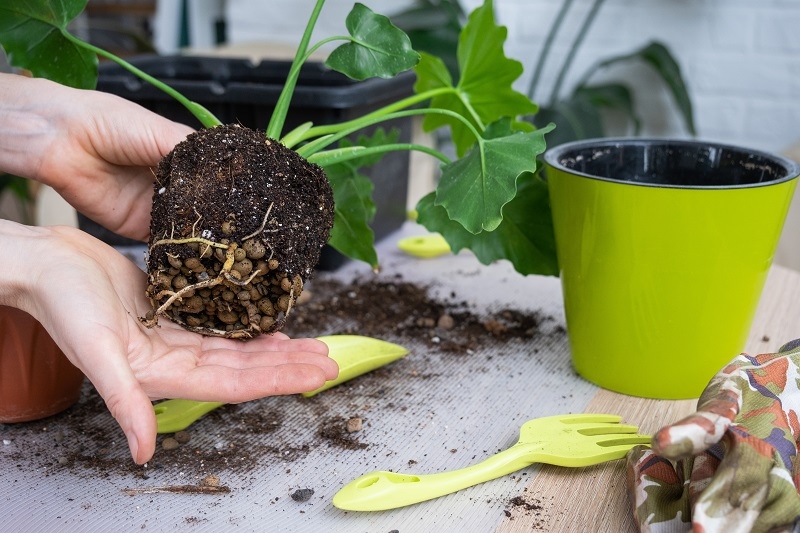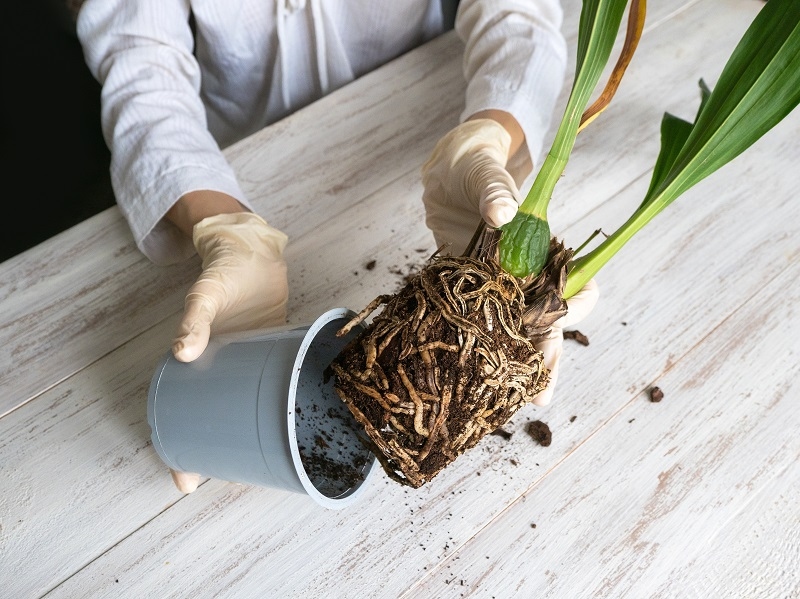
Root rot is one of the most prevalent and damaging issues affecting houseplants. Root rot tends to go unnoticed until the damage is extensive, and many plant hobbyists are left fighting a losing battle to preserve their foliage. Root rot symptoms, the reason root rot occurs in houseplants, and root rot prevention techniques in pots are essential for maintaining a healthy indoor garden. In this handbook, you will learn practical steps to amend waterlogged soil, revive plants, and prevent future diseases.
Root rot is a disease in which the plant's roots have been constantly exposed to excessive moisture, leading to the growth of fungi or bacteria. Root rot can occur due to overwatering, poor drainage, or even from the infected soil. Roots that have rotted due to root rot are unable to effectively uptake nutrients and water, which causes the plant to wilt, turn yellow, and eventually die if not addressed.
Early detection of symptoms of root rot is crucial in order to salvage a plant. Some of the most obvious signs are:
By watching for these signs in your plants, you will be able to catch root rot early on before extensive spread occurs.
Understanding what contributes to root rot in houseplants is critical to prevention. A couple of common causes of root rot are:
By knowing these causes, you can take precautions to reduce the chances of root rot in your home garden.

If the plant is showing signs of root rot, early action is required. The following is a procedure on how to save a plant from root rot:
Gently extract the plant from its container, without damaging any of the healthy root structures you find.
Remove excess soil to reveal the root system.
Inspect each root. Healthy roots will appear firm, and while rotting roots are usually brown, black, and mushy. Cut the infected roots off with sterile scissors.
You can soak the healthy roots in a solution with a fungicide, or you can also use an organic alternative like a diluted cinnamon solution as a natural antifungal.
Choose a pot with proper drainage, and choose a rich potting soil mix that will aerate the soil. Again, do not overwater the plant after the repotting process.
You should only water the plant when the top 1 inch of the soil has dried. Additionally, you will want to help the plant by circulating air flow and providing the proper amount of light for the plant.
Creating proper drainage is one of the first and most important steps in fixing waterlogged soil. Here are some good practices:
Preventing root rot is much easier than fixing it. These are useful recommendations for preventing root rot in pots:
Of course, there are environmental conditions that will cause root rot in addition to care routines:
Excessive humidity and minimal airflow: Stagnant, humid airflow promotes fungus.
Low temperatures: Cold, wet soil gravity slows root growth and increases the risk of rot.
Fertilizer abuse: Overfertilizing can burn off the roots, which now become susceptible to disease.
Monitoring environmental factors closely will help minimize the onset of root rot in your houseplants.
Best practices for watering your containers that will minimize the chances of root rot:
These are the practices that will ensure you are fostering conditions for the development of robust, healthy roots.
Most plant owners unknowingly develop root rot from the most common mistakes:
Avoiding those mistakes is the most important aspect of maintaining a healthy indoor garden.
Plants that are heavily damaged with root rot can be brought back with perseverance:
Remember that even when a plant loses some leaves, it can still produce roots when taken care of.
Root rot is a serious issue that indoor plant caretakers can control. It is crucial for the plants' health to know what root rot symptoms look like, what root rot causes in houseplants, and how to save a houseplant with root rot. You can protect and prevent your plants from this common ailment through preventative strategies such as proper watering, soil care, and remediation of roots in pots. Healthy roots result in healthy leaves, beautiful blooms, and vigorous growth. Using the suggestions and practices in this guide, you will be able to manage root rot with confidence while preventing and remediating for a healthy indoor garden for your future enjoyment.
This content was created by AI